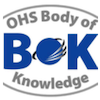Chapter 10.2.2: Organisational Culture- Reviewed and Repositioned
Abstract:
The construct of ‘safety culture’ remains alive and well in industry and among researchers. However, research evidence linking safety culture with better occupational health and safety (OHS) outcomes is weak. While industry may not talk about ‘safety climate,’ the research findings linking safety climate with better OHS outcomes is strong. Therefore, OHS professionals should emphasise safety climate over safety culture. Specifically, OHS professionals should adopt an intervention evaluation process using safety climate to measure the effectiveness of interventions. Safety climate measures may also be used to target interventions in the first instance. A significant gap is identified between research and practice, and the research findings may not always reflect industry experience. This companion chapter to OHS Body of Knowledge 10.2.1 Organisational Culture: A Search for Meaning draws on a range of information sources, including a review of the post-2014 research evidence base and focused discussions with OHS professionals and organisational psychologists. Ultimately, it will be the law and workers who will judge whether an organisation’s efforts to create a healthy and safe working environment have been effective.
Keywords: Organisational culture, safety culture, safety climate, OHS
First year of publication: 2019
Current Version: 2020
Chapter 10.2.2: Organisational Culture- Reviewed and Repositioned
Table of contents
| 1 | Introduction |
| 2 | Research versus practice |
| 3 | Industry needs |
| 4 | The post-2014 evidence base |
| 4.1 | Six systematic reviews |
| 4.2 | Safety culture maturity model studies |
| 4.3 | Accident case studies |
| 4.4 | Summary of results |
| 5 | An evidence-informed statement |
| 6 | Industry needs versus the evidence base |
| 7 | Research-to-practice and practice-to-research gaps |
| 8 | From ‘safety culture’ to ‘culture of safety’ |
| 9 | Intervention evaluation |
| 10 | Implications for OHS practice |
| 11 | Conclusion |
| 12 | Summary |

David Borys PhD, MAppSc(OHS), GCertEd, AssocDip(OHS)
David Borys is an independent safety educator and researcher based in the United States. He provides research supervision support at RMIT University and Federation University Australia and taught safety management at East Carolina University. Previously he was the Program Coordinator for the Graduate Diploma in Occupational Hazard Management at Federation University Australia.
The OHS Body of Knowledge takes a conceptual approach which enables it to be applied in different contexts and frameworks.
To optimise its value for education and professional development learning outcomes have been developed for each technical chapter in the Body of Knowledge.
The learning outcomes as described give an indication of what should be the capabilities of an OHS professional; it is up to those developing OHS education programs, OHS professionals planning their CPD or recruiters or employers selecting or developing people for the OHS function to consider the required breadth vs. depth .
Please read the section on using the learning outcomes before delving into the leaning outcomes of the individual chapters.
The numbers against each learning outcome refer to the chapter number of the BOK download page. No learning outcomes have been developed for the chapters considered introductory or underpinning knowledge (that is chapters 1, 2, 3, 4, 5, 6, 7, 1, .13, 14, 15.)
| Appendix 1 |
Excerpt from OHS Body of Knowledge 10.2.1 Organisational Culture: A Search for Meaning |
| Appendix 2 | Summary of the post-2014 safety culture/climate evidence base |
| Appendix 3 | Findings from focused discussions with OHS professionals |
| Appendix 4 | Perspectives of organisational psychologists |

